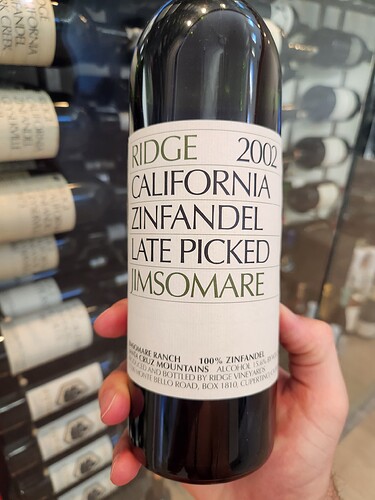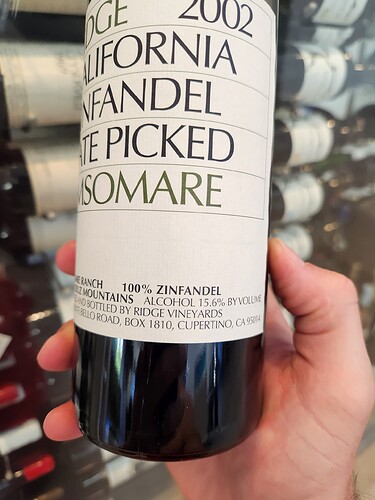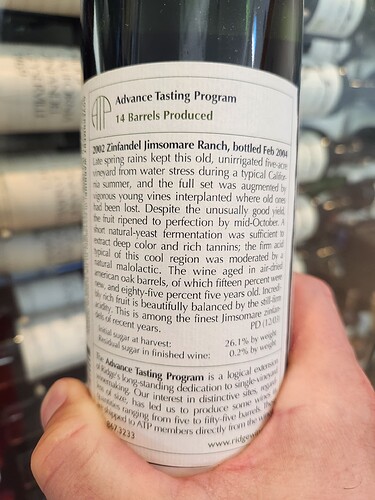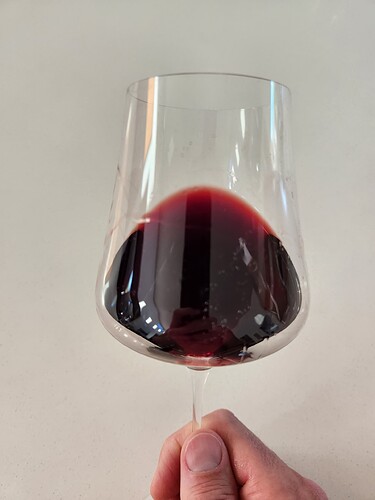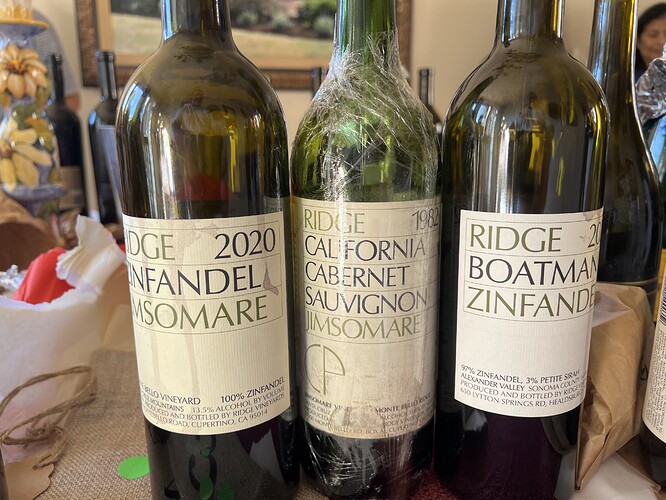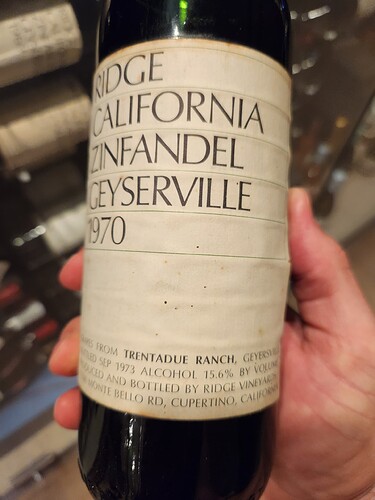2002 Ridge Vineyards Zinfandel, Jimsomare, late picked. It’s always a treat to open an aged Ridge and this bottle is no exception. Was in the mood for a ‘deeper’ Zinfandel and this was spot on. Dark, dusty blue and black fruits, a bit of baking spice, and just a HINT of sweet tannin on the long, acid filled finish. Honestly, blind you’d have a hard time calling this Late Picked as despite the deeper fruit, the acidity creates more of a ‘full-minus’ body mouth-feel. Excellent wine and exactly what I was looking for tonight.
That color is crazy deep, gorgeous.
I’ve had many Ridge Zin’s, but never a late pick! Your notes make me want to change that. ![]() friend
friend
Right! Like a new release!
Cheers pal! ![]()
Great note Rich! I had the pleasure to taste an ‘82 Jimsomare over the weekend was slipped into a blind tasting. My mind was leaning Nebbiolo or Barolo, it was lovely.
That’s awesome! You literally can’t go wrong with aged Ridge.
Feels like not that long ago they were cheap and pretty easy to find at auction. *Sigh
15.6% ABV is what some would call early picked these days!
Tell me about it!
Isn’t this a little out-of-date theses days, Rohit? I mean, sure, there are likely wines here and there still produced in Cali at that level, but truly, the elevated alcohol phenomenon is more a thing of the recent past. I’m personally tired of this type of post.
Perhaps, though, I missed your point.
Ridge used to follow a protocol that if it was over 15%, they would label it as “Late Picked” and if over 16% as " Late Harvest". And if it had a significant RS as “Essence”. That was during Paul Draper’s time. Don’t know if they still follow that protocol though.
Tom
Ahhhh, interesting - i did not know that! As always, thank you for the education @TomHill ![]()
I seem remember some 60’s and 70’s era Zins which were over 15% not with these designations. Maybe the 1968 and 70 Jimsomare?
Ahhh, looks like you’re right. Ive got a 1970 Geyserville that’s 15.6% abv and not labeled late picked.
Here is from another thread. There’s a chart somewhere around here that shows labeled vs actual from lab testing, but I can’t seem to find it.
I’ve discussed point-blank with producers and ABV and it essentially came down to two things: virtue signaling for their perceived style, and having printed labels a few vintages in advance to save costs. One winery actually had a lower ABV than labeled because the vintage was cool and labels were printed ahead of time, whereas every single other year was above the labeled.
Tons of people talk about scaling back their wines, which is probably true, but expecting the label to tell the story is unreliable at best.
Is there a difference??
Label printing takes time. Blending and declassifying decisions can be made during preparation for bottling, which can change the ABV quite a bit, sometimes.
If you look at labels from the '70s, domestic and import, they pretty much all say 12.5%. That covered the tax category of 11-14% with the 1.5% leeway. There just wasn’t incentive to be accurate. You’d have to be an SRI nerd to put winemaking info and the actual ABV on the label…
